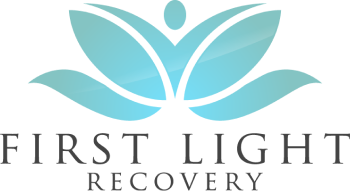Understanding Thought Disorders
Mental health conditions known as thought disorders significantly hinder an individual’s ability to think clearly, communicate effectively, and interpret reality. Symptoms can manifest in various ways, including disruptions in thought processes and incoherent speech. Understanding these disorders is crucial for building a support system for individuals dealing with these challenges.
Types of Thought Disorders
There are over 20 subtypes of thought disorders, each characterized by disturbances in the organization and processing of ideas. Common forms include:
- Alogia: Poverty of speech, where individuals may have little to say.
- Thought blocking: A sudden interruption in thoughts.
- Circumstantiality: Providing excessive details that are irrelevant to the conversation.
- Clanging: Associating words based on their sounds rather than their meanings (e.g., “I see the cat. The hat is fat”).
- Derailment: A shift from one topic to another unrelated topic.
- Echolalia: Repeating words or phrases spoken by others.
Each subtype affects communication abilities and impacts how an individual interacts with their environment (Healthline).
| Type of Thought Disorder | Description |
|---|---|
| Alogia | Reduced speech output |
| Thought Blocking | Interruption in thought process |
| Circumstantiality | Excessive and irrelevant detail |
| Clanging | Word associations by sound |
| Derailment | Loss of track in conversation |
| Echolalia | Repetition of another’s words |
Symptoms of Thought Disorders
Symptoms of thought disorders can vary widely among individuals. Common symptoms include:
- Disorganized thinking
- Incoherent speech
- Abnormal behavior
- Distracted speech
These symptoms can affect one’s quality of life, making it difficult to engage socially or perform daily tasks. It’s essential to recognize that thought disorders may not always be consistent; some individuals may display symptoms under specific circumstances, such as fatigue (Healthline).
For a more comprehensive overview, consider exploring our article on an overview of thought disorders: schizophrenia vs. schizoaffective disorder. Understanding these elements can provide insight into the challenges faced by individuals with thought disorders and the importance of support systems, including medication and psychotherapy.
Risk Factors and Diagnosis
Understanding the risk factors and diagnosis of thought disorders is crucial for early intervention and effective support. These factors can help us determine who might be at a higher risk of developing these conditions and guide our approach to treatment.
Risk Factors for Thought Disorders
There are several risk factors associated with thought disorders. While not everyone with these risk factors will develop a thought disorder, awareness can aid in early detection and intervention. Here are some of the key risk factors:
| Risk Factor | Description |
|---|---|
| Family History | A family history of mental illness, particularly schizophrenia, increases the likelihood of developing thought disorders. |
| Trauma or Stress | Experiencing significant trauma or stress during formative years can lead to increased vulnerability. |
| Substance Abuse | Drug and alcohol abuse can exacerbate symptoms or trigger the onset of thought disorders. |
| Co-occurring Disorders | Individuals with anxiety, depression, or personality disorders are at a higher risk of developing thought disorders. |
| Early Signs | Early symptoms may include disorganized thinking or abnormal behaviors that may persist throughout life (Healthline). |
Diagnosis of Thought Disorders
Diagnosing thought disorders can be challenging due to the variety of symptoms and overlapping conditions. We often rely on a combination of clinical evaluation and observation. Recognizing some of the common symptoms is essential for making an accurate diagnosis. We should pay attention to the following indicators:
- Disorganized Thinking: Individuals may exhibit incoherent speech or difficulty organizing thoughts.
- Incoherent Speech: Conversations may become disjointed, making it hard to follow the individual’s train of thought.
- Communication Challenges: Symptoms may include alogia (poverty of speech), thought blocking, circumstantiality, clanging, derailment, and echolalia (Healthline).
Diagnosis typically includes:
| Diagnostic Approach | Details |
|---|---|
| Clinical Interviews | Detailed interviews with the patient to gather information regarding symptoms and personal history. |
| Behavioral Observations | Observing changes in behavior and interaction styles. |
| Psychological Testing | Administering standardized assessments to evaluate cognitive function and thought patterns. |
Diagnosis may require ruling out other mental health issues and considering a comprehensive view of the individual’s history and current functioning. Early intervention is vital, and diagnostic accuracy can enable effective treatment and support systems. For more information on support strategies, check out our article on building a support system for individuals with thought disorders.
Addressing thought disorders effectively requires a supportive approach that empowers individuals and their loved ones to navigate challenges together.
Treatment Approaches
In our pursuit of effective mental health solutions, we recognize that treating thought disorders involves a combination of medication and psychotherapy. Both approaches work together to help individuals manage their condition and improve their quality of life.
Medication for Thought Disorders
Medication is a cornerstone in the treatment of thought disorders. Antipsychotic medications can help balance brain chemicals and alleviate symptoms associated with these conditions. It is essential for us to understand how these medications function and the potential benefits they offer.
| Medication Type | Examples | Purpose |
|---|---|---|
| Antipsychotics | Risperidone, Olanzapine | To stabilize mood and reduce psychotic symptoms |
| Mood Stabilizers | Lithium, Lamotrigine | To regulate mood swings and improve emotional stability |
Medications can vary in effectiveness depending on the individual’s specific symptoms and preferences. It’s vital to work closely with healthcare providers to find the right medication and dosage The Role of Medication in Treating Schizoaffective Disorder.
Psychotherapy for Thought Disorders
In addition to medication, psychotherapy plays a crucial role in treatment. One of the most common and well-studied forms of psychotherapy is Cognitive Behavioral Therapy (CBT). This approach focuses on addressing current problems and finding solutions, rather than primarily examining past issues (National Library of Medicine).
CBT offers various benefits, including:
- Identifying harmful thoughts or behavioral patterns
- Teaching strategies to replace exaggerated, distressing beliefs with more realistic ones
- Supporting individuals in managing conditions such as anxiety, depression, and obsessive-compulsive disorder
Through behavioral therapy components of CBT, individuals can work on changing patterns that may cause distress or exacerbate their condition (National Library of Medicine).
| Psychotherapy Type | Key Focus | Conditions Treated |
|---|---|---|
| Cognitive Behavioral Therapy (CBT) | Resolve specific current problems | Anxiety, Depression, OCD |
| Behavioral Therapy | Identify and alter harmful behavioral patterns | Anxiety Disorders |
For individuals experiencing thought disorders, combining medication with psychotherapy, especially CBT, can be particularly effective. Our organization aims to support individuals in navigating this journey toward improved well-being, highlighting the importance of a tailored treatment plan that considers both medication and therapeutic approaches. For those interested in learning more about how CBT assists in managing thought disorders, check out our article on How Cognitive Behavioral Therapy Assists in Managing Thought Disorders.
Supporting Loved Ones
Caring for someone with a thought disorder can be a complex journey. Our support system plays a pivotal role in ensuring individuals receive the help and understanding they need. Here, we explore key aspects of family support and the importance of crisis planning.
Family Support for Mental Health
Family members and caregivers often play a significant role in supporting the millions of individuals in the U.S. who face mental health challenges each year. According to NAMI, family support is crucial, as many relatives may experience similar thoughts and questions about the condition.
It’s important for family members to remember that caring for themselves is equally essential. Taking care of one’s own mental health allows caregivers to provide better support to their loved ones. Here are a few ways families can support individuals with thought disorders:
| Family Support Strategies | Description |
|---|---|
| Educate Yourself | Learn about the specific thought disorder affecting your loved one to better understand their experiences. |
| Join Support Groups | Engage in support groups that offer education and skills training for caregivers. These groups can provide valuable connections. |
| Maintain Open Communication | Encourage honest discussions about feelings, fears, and needs to foster a supportive environment. |
| Encourage Treatment | Support your loved one’s adherence to therapy and medication, while being empathetic to their struggles. |
Support groups provide outstanding free education and skills training for those assisting individuals with mental health conditions. This shared experience can be vital for both the caregiver and the person receiving care.
Crisis Planning and Support
Creating a crisis plan is a foundational step in building a robust support system. Healthcare providers often recommend that patients develop a crisis plan, which can be shared with friends and family. This plan should address how to deal with potential crises, including situations where individuals may have suicidal thoughts (NAMI).
A well-defined crisis plan can include:
| Crisis Plan Components | Description |
|---|---|
| Warning Signs | Identify triggers or behaviors that indicate a potential crisis. |
| Coping Strategies | Outline effective strategies that the individual can use to manage their feelings during a crisis. |
| Emergency Contacts | List contact information for mental health professionals, crisis hotline numbers, and trusted friends or family members who can help. |
| Action Steps | Provide clear steps to take in case of a crisis, including where to go and who to call for immediate support. |
By proactively addressing potential crises, we can create a safer environment for our loved ones. Empowering families to understand their role in this process is essential for effective support and management of thought disorders.
For more information on understanding thought disorders, please see our article on an overview of thought disorders: schizophrenia vs. schizoaffective disorder or check out resources related to the role of medication in treating schizoaffective disorder.
Cognitive Behavioral Therapy (CBT)
Overview of CBT
Cognitive Behavioral Therapy (CBT) stands as one of the most common and well-researched forms of psychotherapy. We focus on addressing specific current issues faced by individuals, seeking solutions rather than delving into past experiences (National Library of Medicine). This approach is designed to help individuals understand and change unhelpful patterns of thinking and behavior.
In CBT, harmful thoughts and behavioral habits are identified to promote a better self-image. The goal is to replace exaggerated and distressing beliefs with more realistic and less harmful ones (National Library of Medicine).
Key Components of CBT:
| Component | Description |
|---|---|
| Identifying Thoughts | Recognizing negative or distorted thoughts |
| Behavioral Therapy | Changing behavioral patterns that exacerbate problems |
| Active Participation | Being open with the therapist and engaging in sessions |
Commitment and active involvement are vital for the effectiveness of CBT. The individual is encouraged to be honest with their therapist and to work on issues even between sessions. In some cases, initial medication may be necessary for severe conditions like depression and anxiety disorders to enhance the success of therapy (National Library of Medicine).
Applications of CBT in Mental Health
CBT is widely utilized to treat a variety of mental health conditions. It is effective not only for common disorders like anxiety, depression, and obsessive-compulsive disorder but also for physical ailments like chronic pain and tinnitus. This versatility showcases the holistic approach CBT takes to enhance an individual’s coping mechanisms (National Library of Medicine).
Common Conditions Treated with CBT:
| Condition | Description |
|---|---|
| Depression | Addresses negative thought patterns |
| Anxiety Disorders | Helps manage excessive worry or fear |
| Obsessive-Compulsive Disorder | Aids in breaking compulsive behaviors |
| Addictions | Supports individuals in overcoming substance use |
| Chronic Pain, Tinnitus | Enhances coping strategies for physical health issues |
CBT has proven to be an effective method for individuals experiencing thought disorders, providing them with tools to manage their symptoms and improve their overall well-being. Our approach emphasizes the practical application of CBT techniques in daily life, which can lead to sustained improvement and a better quality of life. If you are interested in learning more about how CBT can assist in managing thought disorders, visit our page on how cognitive behavioral therapy assists in managing thought disorders.
Peer Support and Psychosocial Interventions
Building a support system for individuals with thought disorders is essential to promote recovery and well-being. We recognize the importance of peer support and various psychosocial interventions in this journey.
Importance of Peer Support
Peer support is vital in the mental health community. It focuses on providing emotional, appraisal, and informational assistance among individuals who have experienced similar challenges. This form of support promotes mutual healing by creating a sense of community, and companionship, and reducing feelings of isolation (NCBI). Peer supporters can share their experiences, allowing individuals to feel understood and empowered.
Key benefits of peer support include:
| Benefit | Description |
|---|---|
| Emotional Support | Offers empathy and understanding from those who have faced similar struggles. |
| Informational Assistance | Provides insights and resources about managing thought disorders. |
| Mutual Partnership | Encourages equality among participants, breaking down barriers in traditional healthcare settings. |
At First Light Recovery, we understand that incorporating peer support into treatment can enhance overall recovery experiences for individuals with thought disorders.
Psychosocial Interventions for Schizophrenia
Psychosocial interventions play a crucial role in managing schizophrenia spectrum disorders. These approaches include several therapeutic strategies aimed at improving overall functioning and promoting recovery. Common interventions consist of the following:
| Intervention | Description |
|---|---|
| Cognitive Therapy | Aims to reduce positive symptoms and improve recovery time within a 9-12 month period. |
| Psychoeducation | Educates patients and families about the illness, treatment options, and coping skills. This can lead to better treatment compliance and quality of life (NCBI). |
| Family Intervention | Focuses on improving communication and support within families, which can help in the patient’s recovery process. |
| Social Skills Training | Enhances interpersonal skills, enabling patients to engage better in social environments. |
| Assertive Community Treatment | Provides comprehensive, community-based psychiatric treatment, rehabilitation, and support to individuals with severe mental illness. |
These interventions are effective in managing symptoms, improving functioning, and controlling relapse rates in the short to medium term. However, the long-term effects on psychosocial outcomes require further research.
Incorporating both peer support and psychosocial interventions into one’s recovery plan can significantly enhance the effectiveness of treatment for individuals with thought disorders. We encourage those seeking support to explore these options and learn more about effective resources that can aid in their journey. For additional insights, do not hesitate to check our articles on understanding the spectrum of anxiety disorders: from generalized anxiety to ocd and navigating life with obsessive-compulsive disorder: treatment options and support.




